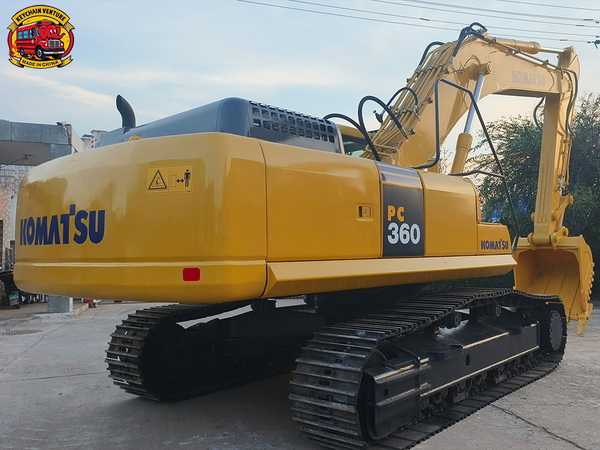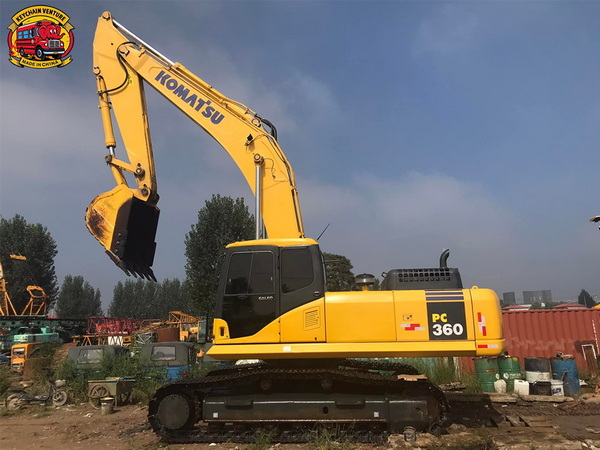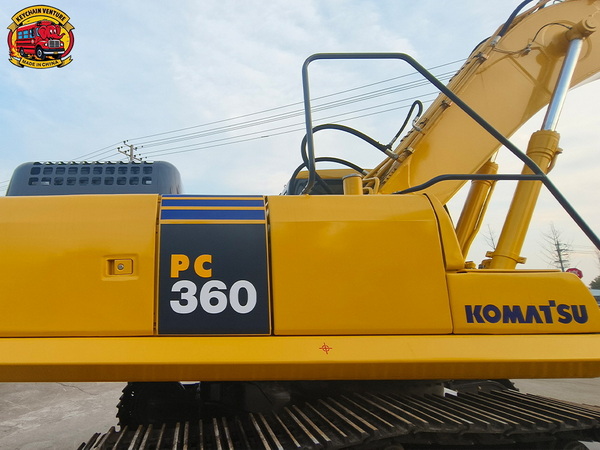Views: 222 Author: Amanda Publish Time: 2025-10-17 Origin: Site








Content Menu
● What Is a Thumb Attachment on a Kubota Mini Excavator?
● Types of Thumb Attachments for Kubota Mini Excavators
>> Fixed Thumb
● How to Use the Thumb on a Kubota Mini Excavator: Detailed Operational Steps
>> Step 1: Prepare the Hydraulic System
>> Step 2: Familiarize Yourself with the Controls
>> Step 4: Practice Precise Movement and Grip
>> Step 5: Safety and Awareness
● Practical Applications of the Kubota Mini Excavator Thumb
>> Land Clearing and Forestry Work
>> Demolition and Scrap Handling
● Installing a Kubota Mini Excavator Thumb
>> Hydraulic Thumb Installation
● Maintenance of Kubota Mini Excavator Thumbs
● Using a Thumb Attachment on a Used Excavator
● Additional Tips for Efficient Thumb Operation
● Frequently Asked Questions (FAQ)
>> 1. How do I activate the thumb on my Kubota mini excavator?
>> 2. Can every Kubota mini excavator be fitted with a thumb?
>> 3. What is better: a fixed thumb or a hydraulic thumb?
>> 4. How does a thumb attachment enhance excavator versatility?
>> 5. Is it worth buying a used excavator with a thumb attachment?
The thumb attachment on a Kubota mini excavator is an essential tool that extends the machine's functionality, allowing operators to grip, lift, and move a variety of materials with ease and precision. Whether it's handling debris, rocks, logs, or assisting in demolition, the thumb acts like a mechanical hand that works in tandem with the bucket. For owners of used excavators, adding or mastering the thumb attachment can significantly boost productivity, versatility, and the overall value of the equipment. This article delves deeply into the types of thumbs available, how to operate them effectively, installation tips, maintenance advice, and best practices for maximizing efficiency with a Kubota mini excavator thumb.

A thumb is a mechanical device attached to the excavator arm, positioned opposite the bucket, that allows the bucket to grip objects securely. Often described as a "claw," this attachment enhances the excavator's ability to handle irregular objects and materials that would otherwise be difficult to manipulate with a bucket alone.
With a thumb attachment, your Kubota mini excavator can:
- Pick up and transport rocks of various sizes
- Easily grasp tree stumps and logs during land clearing
- Handle demolition debris such as concrete chunks and rebar
- Aid in utility tasks such as pipe handling and placement
- Improve loading efficiency when working with bulk materials
Used excavators with a thumb attachment offer operators a cost-effective solution by providing functionality comparable to new machines but at a significantly reduced investment.
Choosing the right thumb attachment depends on your operational needs and budget. Here are the three primary styles widely used on Kubota mini excavators:
The fixed thumb is the simplest and most budget-friendly option. It is welded or bolted at a permanent angle to the excavator arm and does not use hydraulics for movement. This thumb is excellent for basic gripping tasks where precision is less critical.
- Pros: Low cost, easy installation, minimal maintenance required
- Cons: Limited grip flexibility, bucket manipulation needed for complex shapes
- Ideal for users who need a rugged, straightforward grip
A hydraulic thumb uses its own hydraulic cylinder, controlled independently from the bucket. This feature allows the thumb to open and close precisely, adjusting the grip angle to fit objects of various shapes and sizes.
- Pros: Enhanced control and versatility
- Supports complex gripping and loading tasks
- Often sold as an OEM or aftermarket upgrade kit
- Cons: Higher cost, requires proper hydraulic connections and maintenance
This hybrid design links the thumb's movement proportionally to the bucket's motion without requiring separate hydraulics. It offers more flexibility than fixed thumbs and is more straightforward than hydraulic thumbs.
- Pros: Moderate cost and complexity, improved grip adaptability
- Cons: Less precise than hydraulic thumbs, limited independent motion

Mastering thumb control on a Kubota mini excavator requires understanding the machine's hydraulics and controls and practicing coordinated movements.
Most Kubota mini excavators require activating the auxiliary hydraulic system (aux) before you can operate a hydraulic thumb. Locate the aux switch or button inside the cab and press it to enable hydraulic flow to the thumb attachment.
Kubota models typically use a joystick or rocker switch on the right control lever to open and close the thumb. Some older models may also have a foot pedal dedicated to thumb operation. Check your operator's manual to identify the exact control setup for your machine.
With auxiliary hydraulics active, operate the joystick or switch to open the thumb wide enough to fit around the target object. Coordinate the bucket and thumb movement to close around the material, achieving a secure grip.
Practice picking up various objects like rocks, logs, and debris to develop a smooth rhythm between the bucket tilt and thumb closure. Pay attention to the thumb's sensitivity; high throttle settings can cause rapid, jerky movements, so gentle input is advised.
- Always keep the thumb retracted when working in tight spaces to avoid accidental damage.
- Watch for hydraulic leaks or unusual noises that might indicate thumb or cylinder issues.
- Maintain clear visibility around the work zone when maneuvering heavy materials with the thumb.
The thumb attachment is invaluable for efficiently clearing brush and trees, grasping branches, and pulling out roots. It dramatically reduces manual labor time compared to handling materials by hand.
During demolition, a thumb enables operators to pick up concrete chunks, scrap metal, and rubble for sorting and loading. The secure grip prevents materials from slipping, improving safety and efficiency.
For pipe laying and other utility tasks, the thumb helps position heavy pipes or conduits accurately and safely. It offers more control than standard bucket-only operations.
Moving large boulders, placing landscape timber, and removing stumps become faster and easier with a thumb. It enables precise placement, which is critical in landscaping.
Installation usually involves bolting the thumb bracket and fixed thumb to the excavator arm. It requires basic tools and mechanical skills:
- Align the thumb to the arm
- Drill holes and bolt securely
- Test clearance with the bucket to prevent interference
More complex, this installation involves:
- Mounting the hydraulic cylinder on the arm and connecting hydraulic lines
- Integrating the thumb control with the excavator's auxiliary hydraulics
- Implementing safety checks for hose routing and pressure limits
Professional hydraulic expertise is recommended for a flawless hydraulic thumb setup.
Proper maintenance ensures safety, smooth operation, and longevity:
- Grease pivot points weekly
- Regularly inspect hydraulic hoses for leaks or damage
- Tighten bolts and check welds to avoid loosening during use
- Keep hydraulic rods clean and lightly oiled to prevent rust
- Replace worn parts promptly to prevent breakdowns
Adding a thumb attachment to a used excavator is a common upgrade for boosting capabilities without expensive new equipment purchases. When evaluating a used excavator with a thumb, consider:
- Hydraulic system integrity and thumb responsiveness
- Condition of thumb pivot points and cylinder seals
- Control mechanisms functioning correctly (aux button, joystick switch)
- Structural soundness of the thumb mount and bucket linkages
A well-maintained used excavator with a working thumb offers excellent value for contractors and operators focusing on cost efficiency.
- Always coordinate thumb and bucket actions smoothly to avoid material damage or drops.
- Operate the thumb gently during precision tasks to keep fine control.
- Periodically check the hydraulic fluid level and quality in your Kubota to ensure consistent thumb power.
- Familiarize yourself with thumb operation in a safe, open area before tackling tight or hazardous jobs.
- Combine thumb use with other attachments like grapples or rakes in specialized tasks for enhanced versatility.
Using the thumb attachment on a Kubota mini excavator is a game-changer for operators seeking enhanced control and functionality. Whether dealing with land clearing, demolition, landscaping, or utility work, the thumb introduces gripping power that turns your excavator into a versatile tool for complex tasks. Proper installation, operation, and maintenance are key to unlocking the full capabilities of your thumb attachment. For users of used excavators, thumbs add significant value and extended utility, providing a professional-grade solution without the new-machine price tag. With patience and practice, mastering thumb use will revolutionize how your Kubota mini excavator handles materials.

Activate your excavator's auxiliary hydraulics by pressing the aux button or switch inside the cab. Use the joystick rocker switch or foot pedal assigned for thumb control to open and close the thumb. If the thumb becomes unresponsive, re-activate the aux system as needed.
Most Kubota mini excavators support thumb attachments, but compatibility varies by model and hydraulic setup. Fixed thumbs require a bolt-on installation, while hydraulic thumbs need auxiliary hydraulics and appropriate control hookups.
Fixed thumbs are cost-effective, durable, and easy to install but lack independent movement. Hydraulic thumbs offer more precise control and versatility but come at higher cost and require more maintenance.
By enabling the excavator to grip objects firmly, the thumb expands functionality beyond digging, allowing for efficient handling of various materials including rocks, logs, debris, and demolition waste.
Yes, purchasing a used excavator fitted with a thumb can be economical and practical. Ensure hydraulic systems and the thumb mechanism are in good condition to maximize performance and safety.